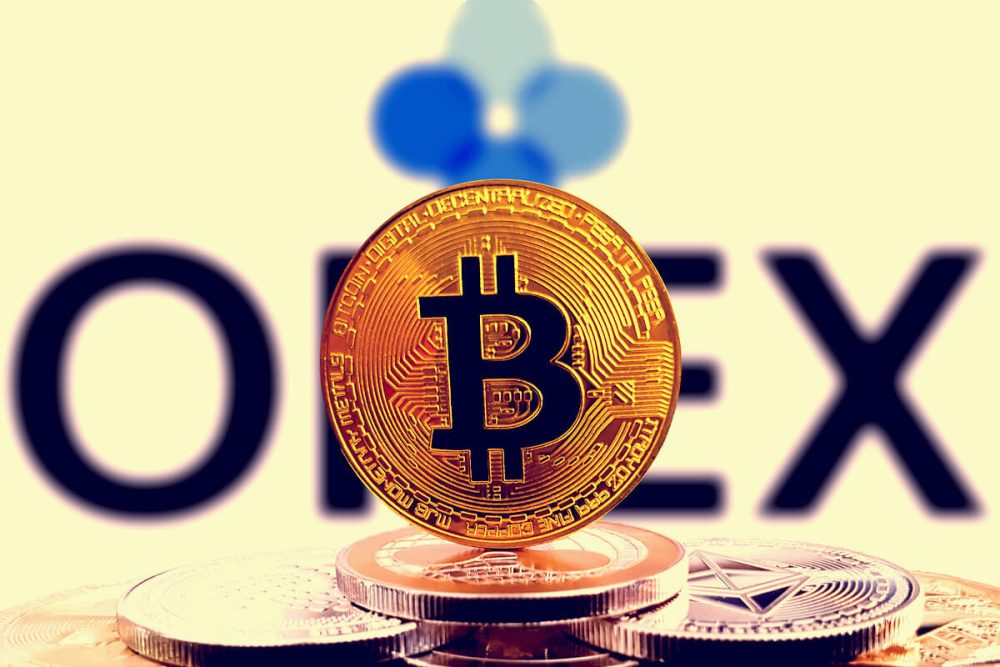Investing can feel overwhelming, especially with so many options out there. One way to simplify things is by understanding the various types of funds available. From mutual funds to ETFs, and even alternative investments, each type offers unique benefits and risks. This guide will break down these different types of funds, helping you make informed decisions about where to put your money.
Key Takeaways
- Mutual funds and ETFs are great for beginners due to their lower investment requirements and diversification.
- Alternative investment funds include private equity, hedge funds, and real estate, each with its own risk and return profile.
- Index funds are a cost-effective way to invest, often outperforming actively managed funds over time.
- Commodity funds allow investors to hedge against inflation by investing in physical assets like gold and oil.
- Diversified funds spread investments across various asset classes, reducing risk and increasing potential returns.
Understanding Mutual Funds and ETFs

Definition and Structure
Mutual funds and ETFs are both investment vehicles that pool money from multiple investors to invest in a diversified portfolio. Think of it like a potluck, but instead of food, everyone brings cash, and a professional chef (the fund manager) decides what ingredients (assets) to buy. A mutual fund is a professionally managed investment fund that gathers money from many investors to purchase stocks, bonds, or other securities. Investors buy shares in the mutual fund, and the fund’s value fluctuates based on the performance of its holdings.
ETFs, or Exchange-Traded Funds, are similar to mutual funds, but they trade on stock exchanges like individual stocks. This means their prices can change throughout the day, offering more flexibility for investors who want to react quickly to market movements. ETFs often track a specific index, sector, or investment strategy.
Types of Mutual Funds
Mutual funds come in various flavors, each with its own investment objective and risk profile. Here are a few common types:
- Equity Funds: Primarily invest in stocks, aiming for capital appreciation. These can range from aggressive growth funds to more conservative value funds.
- Bond Funds: Focus on fixed-income securities like government or corporate bonds, providing a steady stream of income.
- Money Market Funds: Invest in short-term, low-risk debt instruments, offering a safe haven for cash.
- Balanced Funds: Maintain a mix of stocks and bonds, providing a balance between growth and income.
- Index Funds: Mirror a specific market index, such as the S&P 500, offering broad market exposure at a low cost.
Choosing the right type of mutual fund depends on your investment goals, risk tolerance, and time horizon. It’s important to understand the fund’s investment strategy and holdings before investing.
Benefits of Investing in ETFs
ETFs have gained popularity due to their numerous advantages:
- Diversification: ETFs provide instant diversification by holding a basket of securities, reducing the risk associated with investing in individual stocks or bonds.
- Liquidity: ETFs trade on exchanges, making them easy to buy and sell throughout the day.
- Low Cost: Many ETFs have lower expense ratios compared to actively managed mutual funds, saving investors money over the long term.
- Transparency: ETFs typically disclose their holdings daily, allowing investors to see exactly what they own.
ETFs can track various indexes, sectors, or investment strategies, offering investors a wide range of options. For example, you can find ETFs that track the S&P 500, specific industries like technology or healthcare, or even Citadel Hedge Fund strategies. This flexibility makes ETFs a versatile tool for building a diversified portfolio.
Exploring Alternative Investment Funds
The world of finance has many ways to invest, and one interesting option is alternative investment funds. These funds let you go beyond the usual stuff like stocks and bonds. They give investors different choices to spread out their investments and maybe get better returns. Let’s look at what these funds are, what kinds there are, and what to think about before investing.
Private Equity Funds
Private equity funds put money into companies that aren’t publicly traded. This could mean giving money to new businesses, helping companies grow, or buying existing companies. The goal is to help these investments grow and eventually make a lot of money. These funds aim to nurture these investments and ultimately realize substantial gains.
Hedge Funds
Hedge funds use different strategies, often using both long and short positions in the market. They usually invest in things that are easy to buy and sell, like stocks, bonds, and derivatives. Hedge funds try to lower risk and make money no matter what the market is doing. However, it’s important to understand the operational risks associated with hedge funds.
Real Estate Funds
Real estate funds invest in properties like buildings, land, and other real estate assets. These funds can give you income from rent and the chance to make money if the property value goes up. Investing in real estate can be a good way to diversify your portfolio. Here are some things to consider:
- Location of the properties
- Type of real estate (commercial, residential, etc.)
- Management of the properties
Alternative investments can be complex and may not be suitable for all investors. It’s important to do your research and understand the risks before investing.
Analyzing Index Funds and Their Impact
What Are Index Funds?
Index funds are a type of investment fund, often mutual funds or ETFs, designed to mirror the performance of a specific market index, such as the S&P 500. Instead of having fund managers actively pick investments, index funds passively hold all or a representative sample of the securities within the index. This approach aims to replicate the index’s returns, providing investors with broad market exposure.
Advantages of Index Funds
Index funds offer several benefits that make them attractive to a wide range of investors:
- Lower Fees: Because they are passively managed, index funds typically have lower expense ratios compared to actively managed funds. This can significantly impact long-term returns, as lower fees mean more of your investment is working for you.
- Diversification: Index funds provide instant diversification by holding a basket of securities that represent a broad market or sector. This reduces the risk associated with investing in individual stocks or bonds.
- Transparency: The holdings of an index fund are usually publicly available, allowing investors to see exactly what they are invested in. This transparency can help investors understand the fund’s risk profile and potential returns.
Index funds are a great option for investors looking for a simple, low-cost way to invest in the stock market. They offer diversification and transparency, making them a solid choice for both beginners and experienced investors.
Performance Comparison with Actively Managed Funds
One of the most debated topics in investing is whether actively managed funds can consistently outperform index funds. While some actively managed funds may outperform in certain periods, studies have shown that, over the long term, a significant percentage of actively managed funds fail to beat their benchmark index, especially when accounting for fees. This is why many investors choose index funds as a core part of their investment strategy.
| Feature | Index Funds | Actively Managed Funds |
|---|---|---|
| Management Style | Passive | Active |
| Fees | Lower | Higher |
| Diversification | Broad | Varies |
| Potential Returns | Tracks Index | Aims to Outperform Index |
| Transparency | High | Can Vary |
The Role of Commodity Funds in Investment Strategy
Commodity funds offer a way to invest in raw materials or primary agricultural products. Think gold, oil, wheat, and other basic resources. These funds can be a bit different from your typical stock or bond investments, and they play a specific role in some investment strategies. Let’s explore the world of commodity funds.
Types of Commodities
Commodities fall into a few main categories:
- Energy: This includes crude oil, natural gas, and heating oil. These are essential for powering economies, and their prices can be volatile.
- Metals: Gold, silver, platinum, and copper are examples. Precious metals like gold are often seen as a safe haven during economic uncertainty.
- Agriculture: Corn, soybeans, wheat, and livestock are included here. Weather patterns and global demand can significantly impact these prices.
Commodity funds can invest directly in the physical commodities (though this is rare for individual investors) or, more commonly, in commodity ETFs and futures contracts that track commodity prices. Understanding the different types of commodities is the first step in understanding commodity funds.
Benefits of Commodity Funds
Commodity funds can bring a few potential benefits to an investment portfolio:
- Inflation Hedge: Commodities often rise in price during periods of inflation, making them a potential hedge against rising costs. This is because the cost of producing goods often increases with inflation, driving up commodity prices.
- Diversification: Commodity prices don’t always move in the same direction as stocks and bonds. Adding commodities can help diversify a portfolio and potentially reduce overall risk.
- Potential Returns: If you correctly predict a rise in commodity prices, you can potentially earn significant returns. However, this also comes with increased risk.
It’s important to remember that commodity markets can be very volatile. Prices can fluctuate dramatically based on supply and demand, geopolitical events, and other factors. Therefore, commodity funds are generally not suitable for risk-averse investors.
Risks Associated with Commodity Investments
While there are benefits, it’s important to be aware of the risks:
- Volatility: Commodity prices can be extremely volatile, leading to significant gains or losses in a short period.
- Storage Costs: If the fund invests directly in physical commodities, there are costs associated with storing those commodities. These costs can eat into returns.
- Geopolitical Risk: Political instability in commodity-producing regions can disrupt supply and cause price spikes.
Commodity funds are not a "set it and forget it" investment. They require careful monitoring and a good understanding of the factors that influence commodity prices. Before investing, consider your risk tolerance and investment goals. Also, consider how hedge funds and other alternative investments might fit into your overall strategy.
Venture Capital and Its Importance

Venture capital (VC) is a type of private equity that focuses on funding early-stage companies and startups with high growth potential. It’s a risky but potentially rewarding asset class, playing a vital role in innovation and economic development. Think of it as betting on the future, one startup at a time.
Understanding Venture Capital Funds
Venture capital funds are investment vehicles that pool money from various investors, including institutions and high-net-worth individuals. These funds are managed by venture capitalists, who have expertise in identifying and nurturing promising startups. The goal is to invest in companies that can generate significant returns, usually through an acquisition or initial public offering (IPO). It’s not just about the money; VCs often provide guidance and support to help these young companies grow. A new venture capital fund is transforming global investments in DeepTech.
Investment Strategies in Venture Capital
VCs employ various strategies to maximize their returns. These include:
- Focusing on specific sectors: Some funds specialize in areas like technology, healthcare, or consumer goods.
- Investing in different stages: Funds may focus on seed-stage, early-stage, or late-stage companies.
- Taking an active role: Many VCs actively participate in the management of their portfolio companies, offering strategic advice and operational support.
Venture capital firms often look for companies with a strong management team, a disruptive technology, and a large addressable market. They conduct thorough due diligence before investing, assessing the company’s business plan, financial projections, and competitive landscape.
Risks and Rewards of Venture Capital
Investing in venture capital comes with significant risks. Many startups fail, and it can take years to see a return on investment. However, the potential rewards can be substantial. Successful VC investments can generate returns that far exceed those of traditional asset classes. Venture capital funds are experiencing their strongest performance since the post-crisis period.
Here’s a quick look at the risk-reward profile:
| Feature | Description Venture capital (VC) is a type of private equity that focuses on funding early-stage companies and startups with high growth potential.
The Significance of Diversified Funds
Diversified funds are designed to spread investments across various asset classes, sectors, and geographic regions. The goal? To reduce risk. It’s like not putting all your eggs in one basket. If one investment performs poorly, the others can help offset the losses. I think it’s a pretty smart idea, honestly.
What Are Diversified Funds?
Diversified funds are investment vehicles that hold a mix of assets. This could include stocks, bonds, real estate, and even commodities. The main idea is to achieve a balance that minimizes risk while still aiming for growth. These funds are actively managed or passively managed, depending on the fund’s strategy. Actively managed funds have a fund manager making decisions about what to buy and sell, while passively managed funds track a specific market index. It’s all about finding the right fit for your investment style.
Benefits of Diversification
Diversification offers several key advantages:
- Risk Reduction: By spreading investments across different asset classes, the impact of any single investment’s poor performance is lessened. This is probably the biggest benefit.
- Potential for Stable Returns: A diversified portfolio can provide more consistent returns over time, as different asset classes perform differently under various market conditions. It’s about smoothing out the ride.
- Access to Multiple Markets: Diversified funds allow investors to tap into a wider range of investment opportunities that they might not be able to access individually. Think global stocks or even alternative investment funds.
Diversification doesn’t guarantee profits or prevent losses, but it’s a strategy to manage risk. It’s about building a portfolio that can weather different economic storms.
Types of Diversified Funds
There are several types of diversified funds available, each with its own approach to asset allocation:
- Balanced Funds: These funds typically hold a mix of stocks and bonds, aiming for a balance between growth and income. It’s a classic approach.
- Target Date Funds: These funds automatically adjust their asset allocation over time, becoming more conservative as the target date (usually retirement) approaches. Set it and (almost) forget it.
- Asset Allocation Funds: These funds have a flexible approach to asset allocation, adjusting the mix of assets based on market conditions and the fund manager’s outlook. More active management here.
Choosing the right type of diversified fund depends on your individual investment goals, risk tolerance, and time horizon. It’s worth doing your homework and maybe even talking to a financial advisor. You can also look into BlackRock Fund of Hedge Funds for more options.
Considerations When Choosing Funds
Choosing the right fund can feel like navigating a maze. There are so many options, and each one comes with its own set of features and potential pitfalls. It’s easy to get lost in the details, but with a bit of careful thought, you can make choices that align with your financial goals. Let’s break down some key things to keep in mind.
Assessing Risk Tolerance
Before you even start looking at specific funds, it’s important to understand your own risk tolerance. Are you comfortable with the possibility of losing money in exchange for potentially higher returns, or do you prefer a more conservative approach that prioritizes preserving capital? Your risk tolerance should be the foundation of your investment strategy.
Think about these questions:
- How would you react to a significant drop in the value of your investments?
- What is your time horizon for investing? (Are you saving for retirement in 30 years, or a down payment on a house in 2 years?)
- What are your financial goals? (Are you trying to grow your wealth quickly, or simply keep pace with inflation?)
Your answers to these questions will help you determine whether you should be focusing on lower-risk options like bond markets or higher-risk options like stocks.
Understanding Fees and Expenses
Fees and expenses can eat into your returns over time, so it’s important to understand what you’re paying. Funds charge various fees, including:
- Expense ratios: This is an annual fee, expressed as a percentage of your investment, that covers the fund’s operating expenses.
- Sales loads (front-end or back-end): These are commissions paid when you buy or sell shares of the fund.
- 12b-1 fees: These are fees used to cover marketing and distribution expenses.
It’s easy to overlook fees, but they can have a big impact on your long-term returns. Even a seemingly small difference in expense ratios can add up to a significant amount over time. Always compare the fees of different funds before you invest.
Evaluating Fund Performance
Past performance is not necessarily indicative of future results, but it can still be a useful tool for evaluating funds. Look at a fund’s performance over different time periods (e.g., 1 year, 3 years, 5 years, 10 years) and compare it to its benchmark index and its peers. Also, consider the fund’s investment banks strategy and how it has performed in different market conditions.
Here’s a simple table to illustrate how to compare fund performance:
| Fund Name | 1-Year Return | 3-Year Return | 5-Year Return | Expense Ratio |
|---|---|---|---|---|
| Fund A | 12% | 10% | 8% | 0.50% |
| Fund B | 10% | 8% | 6% | 0.25% |
| Benchmark | 9% | 7% | 5% | N/A |
In this example, Fund A has outperformed the benchmark over all time periods, but it also has a higher expense ratio than Fund B. You’ll need to weigh these factors to decide which fund is the better choice for you.
Final Thoughts on Investment Funds
In summary, understanding the various types of funds is key for anyone looking to invest wisely. Whether you’re considering mutual funds, ETFs, or alternative investments, each option has its own set of benefits and risks. It’s important to think about your financial goals and risk tolerance before diving in. Take your time to research and maybe even consult with a financial advisor if you’re unsure. Remember, investing is a journey, and being informed is the best way to navigate it.
Frequently Asked Questions
What are mutual funds?
Mutual funds are investment pools where many people combine their money. A professional manager uses this money to buy stocks, bonds, or other investments for everyone in the fund.
How do ETFs work?
ETFs, or exchange-traded funds, are similar to mutual funds but are traded on stock exchanges like individual stocks. They offer a way to invest in a variety of assets without needing to buy each one separately.
What is the difference between mutual funds and ETFs?
The main difference is how they are traded. Mutual funds are bought at the end of the trading day at a set price, while ETFs can be bought and sold throughout the day at fluctuating prices.
What are alternative investment funds?
Alternative investment funds are types of investments that go beyond traditional stocks and bonds. They can include private equity, hedge funds, and real estate, among others.
Why should I consider investing in index funds?
Index funds are designed to match the performance of a specific market index, like the S&P 500. They usually have lower fees and can be a good way to invest without needing to pick individual stocks.
What are the risks of investing in commodity funds?
Commodity funds can be risky because their value can change a lot based on market conditions. They often invest in things like gold, oil, or agricultural products, which can be affected by many factors.

Peyman Khosravani is a global blockchain and digital transformation expert with a passion for marketing, futuristic ideas, analytics insights, startup businesses, and effective communications. He has extensive experience in blockchain and DeFi projects and is committed to using technology to bring justice and fairness to society and promote freedom. Peyman has worked with international organizations to improve digital transformation strategies and data-gathering strategies that help identify customer touchpoints and sources of data that tell the story of what is happening. With his expertise in blockchain, digital transformation, marketing, analytics insights, startup businesses, and effective communications, Peyman is dedicated to helping businesses succeed in the digital age. He believes that technology can be used as a tool for positive change in the world.




































